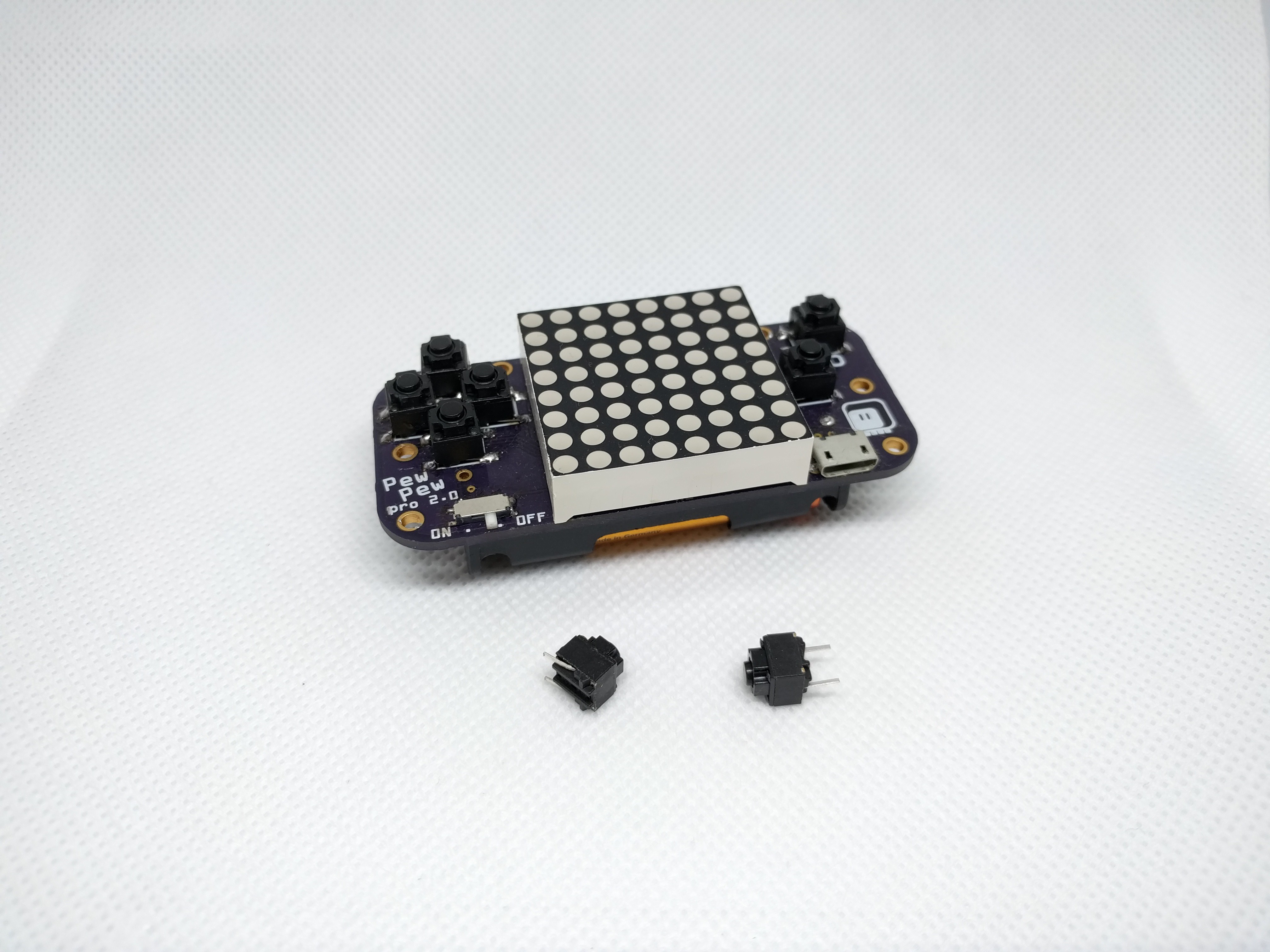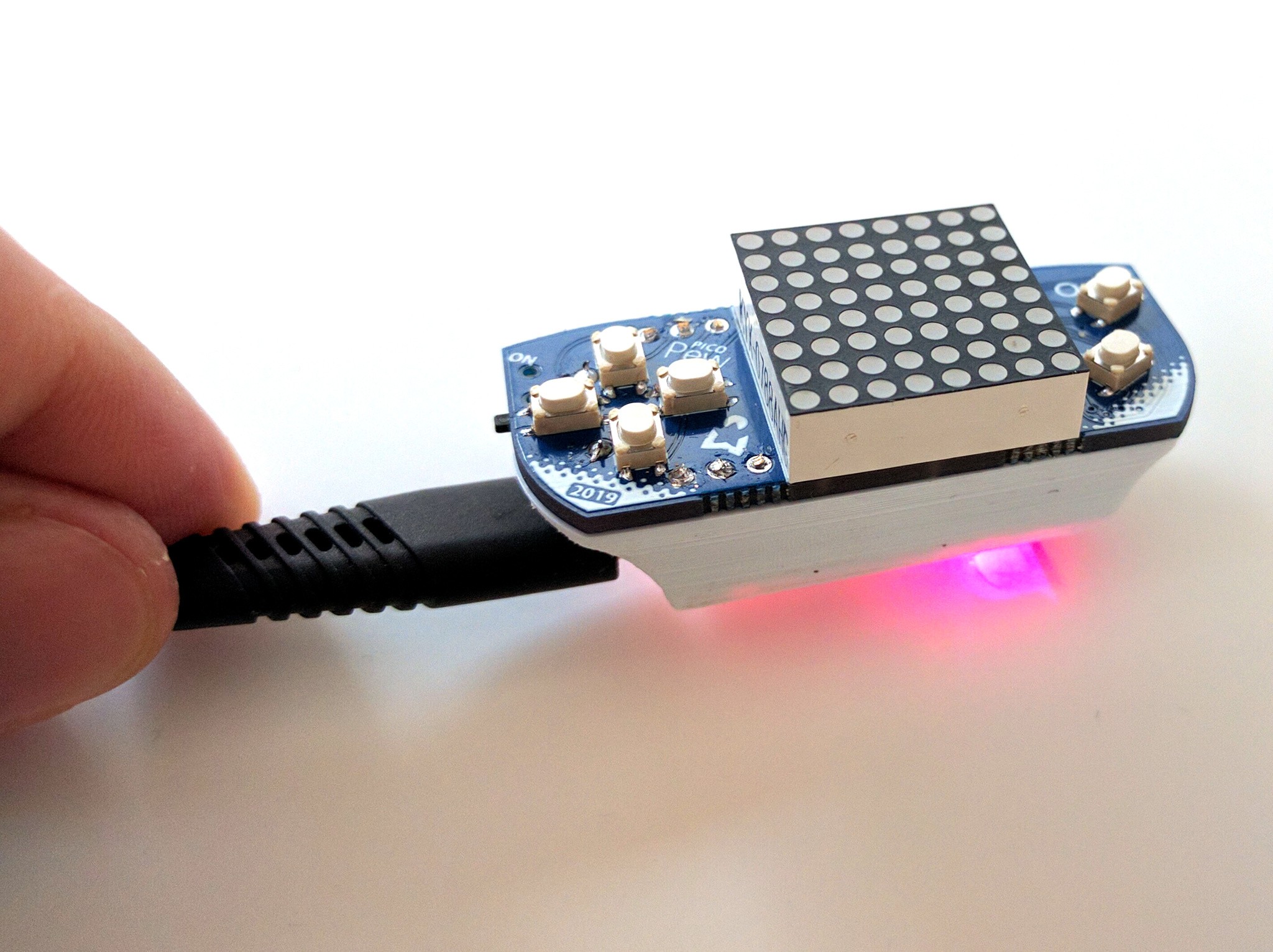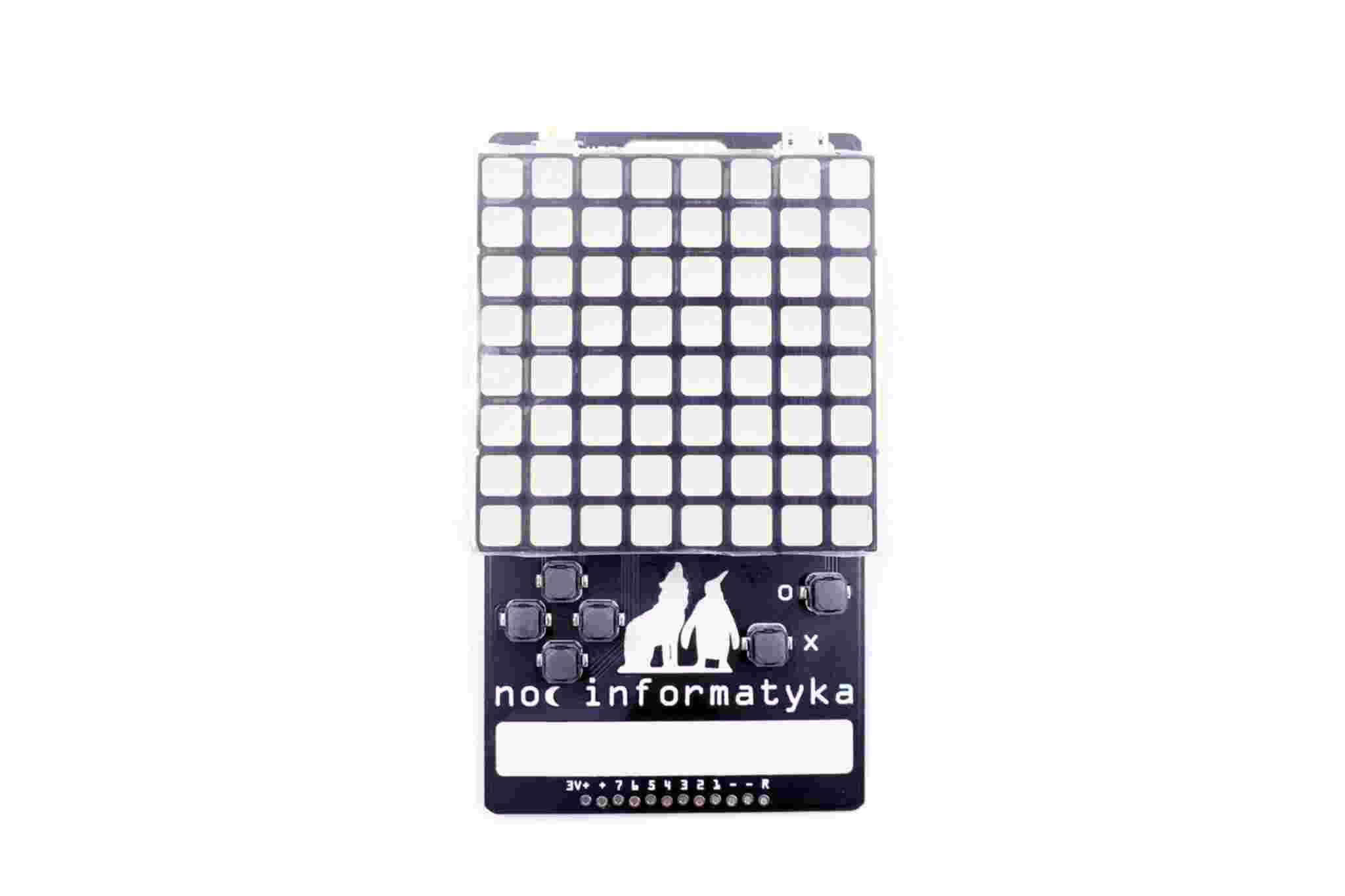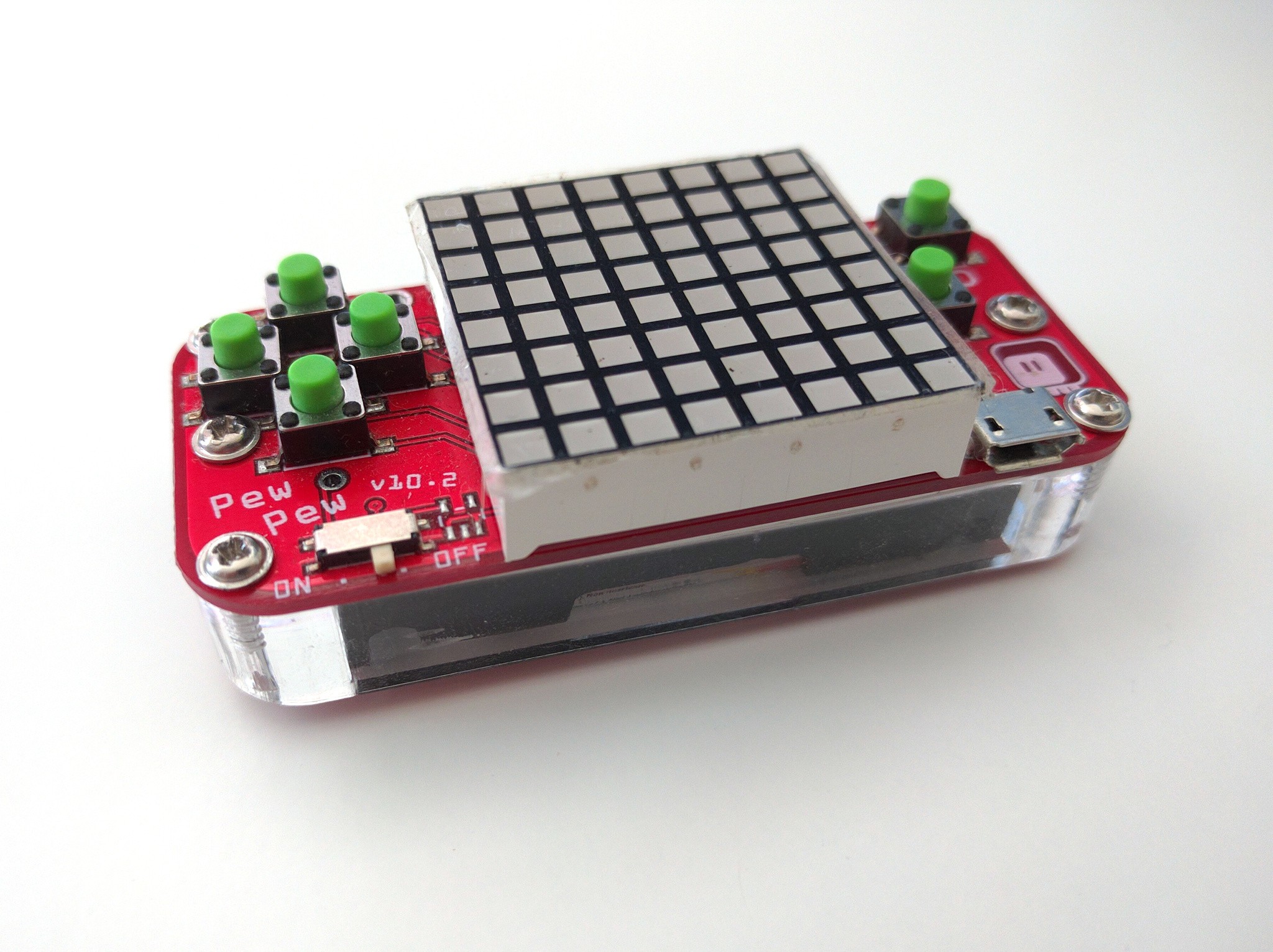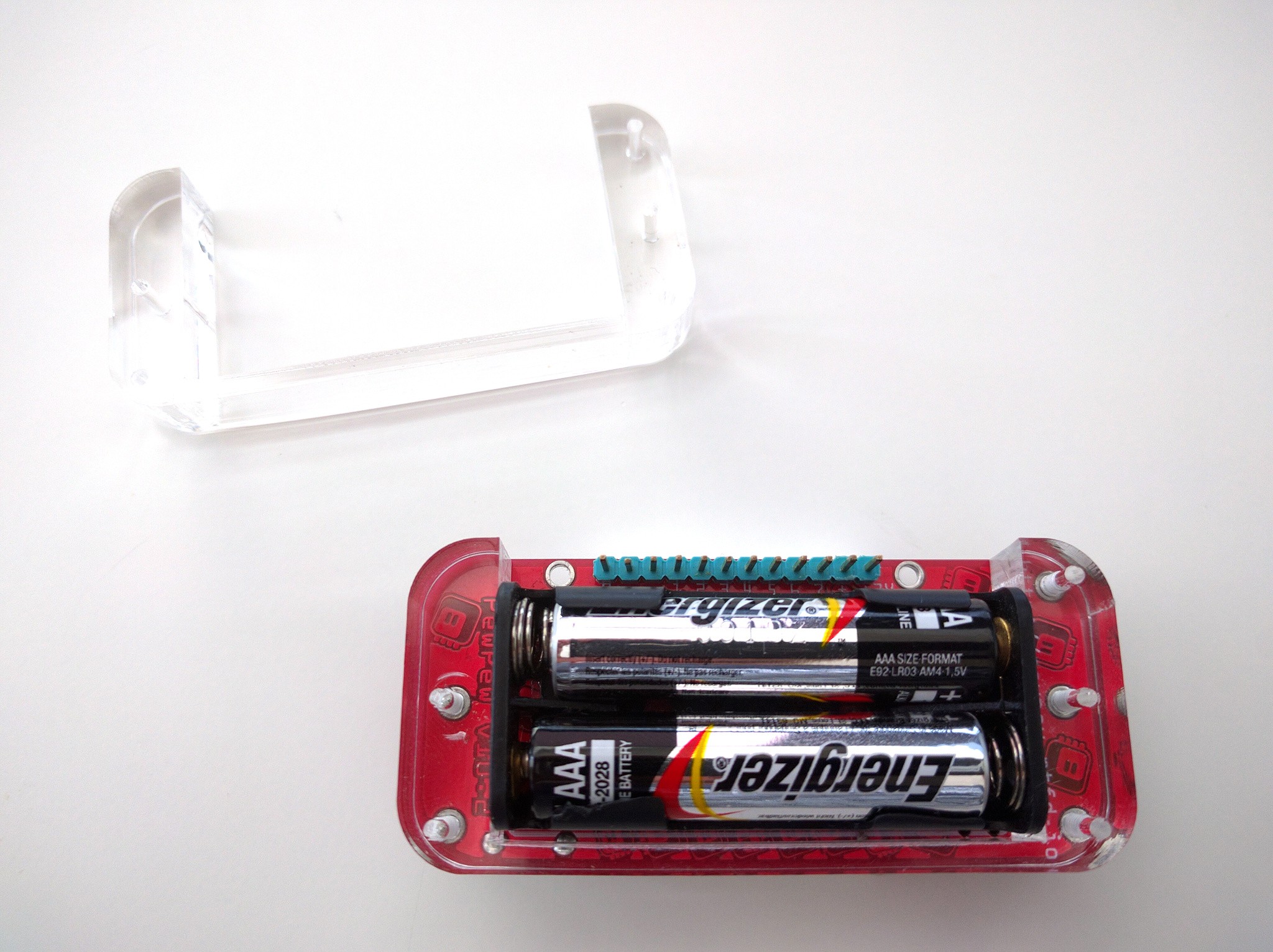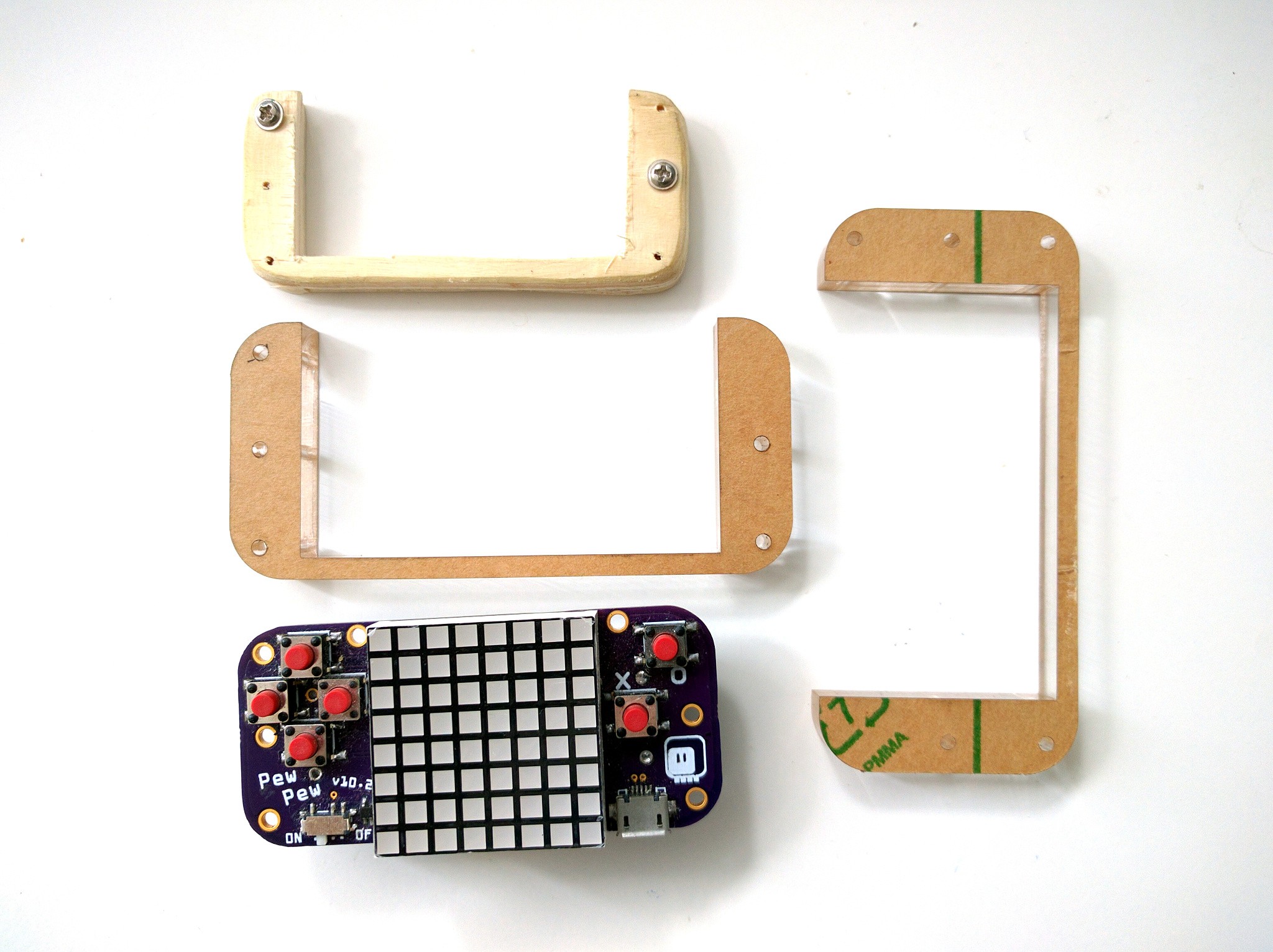-
Better Buttons?
04/08/2021 at 13:54 • 0 commentsButtons are always a huge problem in a hand-held device. Sure, when making the prototype you can just slap any tact switches on there, and they work well enough. But for something like a game console, where you are going to be pressing those buttons a lot of time, the feel they provide is very important.
You can dismiss right away most of the metal switches available out there — their stem is too small to be pressed comfortably multiple times, and they require quite a bit of force to be pressed as well. Unless you are also doing custom case and key caps, they are simply not suitable.
The standard 6mm tact switches are not completely hopeless. They are common and cheap, come with the stems of different heights, and sometimes you can even find versions of them with lower than regular actuation force, which helps a lot. But they still are pretty hard and noisy.
Then you have the "quiet" silicone switches, which look great, with their large square stem, but feel extremely mushy. There is practically no tactile feedback at all.
But recently I found one more source of buttons, which have very nice feel. I didn't see them before, because they are not sold in the "tact switch" category, and they are usually through-hole, not SMD (though can be hacked for that). I'm talking about the buttons that are used in computer mice. They used to be very large, and thus unsuitable for our small devices, but recently there are versions of them that look very much like our tact switches, except they have much lower actuation force and much more pleasant and crisp click. After all, they are for clicking your mouse.
As an experiment, I replaced the tact switches on one of my PewPew prototypes with those switches, and I am very pleased with the outcome:
![]()
As you can see, the stem is rather small, but it's big enough to be pressed comfortably. The travel is short, and the actuation force is small, but the click is very pronounced and satisfying.
You can see on the photo that one of the switches has its legs bent — this, together with small pieces of the legs visible on the opposite side, makes it possible to solder it to a reguar 6mm SMD tact switch footprint. However, there is really no reason for PewPew Standalone to use only SMD switches — I could easily add holes to the footprint, to make such buttons an option.
I also found some "low-profile" versions of mouse button switches, that are only 4mm high, but they are "quiet", with the click being much quieter and less satisfying — but they are still much better than regular tact switches, due to much lower actuation force and travel. I'm considering using them in future handheld devices.
-
PicoPew
01/18/2020 at 21:12 • 3 commentsI don't think I have written about it here yet, but there is one more member of the PewPew family of devices, and this time it's not made by me, which makes me really happy. I'm talking about the a project by @Christian Walther called #PicoPew. You should go there and read the project logs, I think they are interesting and very detailed. It's much more powerful device, with a bi-color matrix with 256 possible colors, esp32-based with TinyPICO wifi board as the brains, and a really small form factor. I have obtained a working one by trading both with Christian and with Unexpected Maker for a #PewPew M4 (one for the shield, one for the TinyPICO).
Here it is all assembled, and with an enclosure that Christian 3D-printed for me:
![]()
I still need to get all the software on the device, but so far it seems to be functioning as expected. I love how the Pew library has worked here as a kind of a base standard, on top of which more functionality is built. I didn't anticipate this, but maybe it will really become a platform.
-
Noc Informatyka
09/27/2019 at 12:26 • 1 commentThis is another secret project that I can now write about. At the EuroPython I have been approached by the organizers of a Polish event Noc Informatyka (https://nocinformatyka.pl) and asked to prepare badges for the event. I agreed, and we produced 150 custom units.
![]()
Electrically it's identical to the PewPew Standalone, including the voltage regulator that is optional for Standalone, but included by default here. Mechanically, I used the same large LED matrix as in the EuroPython PewPews, but this time with a vertical arrangement of the device and with quiet silicone buttons, same as used in #µGame. The connector header has been moved to the bottom, to make room for the lanyard hanger, and there is a place for writing the participant's name. The battery holder for two AAA batteries is on the back, which is otherwise empty.
The units were produced and tested by @Makerfabs, and it all went very smooth.
I can't wait to see what the participants of the event will do with them!
-
Workshops in Zürich
08/25/2019 at 17:18 • 1 commentThe weekend of August 31st and September 1st, @Christian Walther and me are going to run workshops on game programming with CircuitPython using the PewPews.
You will have a unique opportunity of becoming a full-stack game developer: starting with assembling and soldering your game console, through a simple bouncing ball tutorial, to a full-fledged game for a PewPew, all in just 2-4 hours!
-
New Source
08/09/2019 at 09:41 • 1 commentYou can now buy PewPew Standalone directly from Makerfabs, instead of Tindie. What does it mean for you? Well, for one it is cheaper, because there are no additional payments and handling along the way. The shipping is about the same, but you get registered mail for that price, so it's actually cheaper too. Oh, and it comes already fully assembled, and in any color you like, as long as it's black.
Personally I am very excited about this, because in practical terms in means that more people can get their hands on it, and that I'm free to focus on the support, documentation, more games and the next version.
Big thanks to @Makerfabs — they helped me with all of my bigger projects, and they have always been very reliable.
-
Hardware Design for EuroPython Version
06/22/2019 at 12:59 • 0 commentsThe conference is coming fast, and it's not a secret anymore, so I took the liberty of publishing all my design files for that version of PewPew at https://github.com/pewpew-game/hardware-europython2019
Electrically it's identical to the 10.3 verson of PewPew Standalone. Mechanically it's similar to the 10.4, except for the smaller switch moved to the upper edge, and USB port moved to the upper edge as well. Well, and the LED and button colors, of course.
-
EuroPython 2019
06/15/2019 at 08:42 • 1 commentThe cat is out of the bag, so I can finally write about this.
Six months ago I had a presentation in Brussels at FOSDEM about developing your own game consoles. Of course PewPew was one of the prominent examples. After the talk (which I completely butchered due too bad timing), we talked with Marc-Andre, one of the people who make EuroPython possible year after year, about the possibility of running a workshop on PewPew programming at the EuroPython conference. I don't remember much from that conversation, because I was stressed after the talk, but he followed up on that after talking with the other organizers, and finally a decision has been made to give PewPews to all participants.
I contacted @Makerfabs about producing them, and we got an initial quote. Since we were going to be producing 1400 units, this was an opportunity to use a custom PCB soldermask color, and I couldn't miss that opportunity. I received samples of the branding materials, and I sat down to redesign the 10.3 version (the large one) to make it better suited for wearing at the conference, and to add branding to it. The conference colors are orange and blue, so I switched to blue display and buttons, and used orange soldermask. I moved the USB port around, replaced the switch with a smaller, SMD version, and made sure there is almost nothing on the back side, where the logos go.
![]()
Later on we also added a hanger at the top of the PCB — breakable, so that you can have easier access to the pin connector. We had some back-and-forth negotiating the best payment method, shipping, packaging, etc., but in the end we came to an agreement, and placed the order. The boards are being produced and tested even as we speak, and the above photo is from a first unit they assembled and programmed. All in all, it's an interesting adventure.
The conference is in three weeks, and we will be running workshops on programming those devices — even though they come by default programmed with a couple of games. If you are coming to EuroPython, please consider staying and lending a hand running those workshops — it's a great opportunity to talk with other participants and show off your experience!
-
Laser-cut Backs
06/07/2019 at 13:34 • 0 commentsI was making an order at @Elecrow again, so I added the order for the laser-cut backs for PewPew again — this time with the size specified, so that there will be no confusion. Today they arrived:
![]()
They work pretty well, even though the battery still sticks some millimeter or two. It was the thickest acrylic available, at 10mm. I could probably stick something rubbery or wooden in there, to get that last millimeter and to make it nicer to hold. Or actually cut them from 12mm wood or cork — that would work very well too! A view from the bottom:
![]()
In any case, I'm adding the PDF file to the files section for download, and I will add an option for this to the Tindie store.
-
Laser Cutting is Tricky
03/19/2019 at 13:14 • 6 commentsThe laser-cut acrylic pieces that I planned to attach on the back of the small PewPew Standalone boards just arrived, and I have to say I didn't anticipate how they came out:
![]()
Well, at least the shape is correct... but I didn't think the scale will be wrong. Especially since I actually printed the PDF and made a wooden model based on that, to make sure everything is good. Oh well, I guess that's it for ordering laser-cutting from China. I will have to do it myself.
-
Mailing List
03/17/2019 at 19:28 • 0 commentsAs the number of users grows, it would be nice to have one central place for asking questions and general discussion. The CircuitPython discord channel is one such place, but it's not dedicated, and many people don't want to use Discord, so there is now a mailing list. The address is pewpew@python.org and you can subscribe by visiting https://mail.python.org/mailman3/lists/pewpew.python.org/.
PewPew Standalone
A Python-based micro game console, optimized for game development workshops.
 deʃhipu
deʃhipu